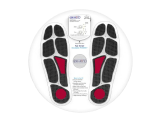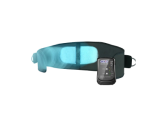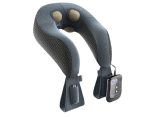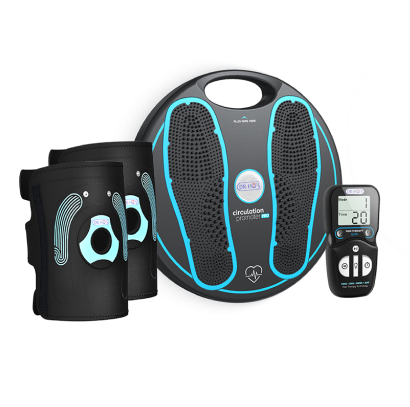When it comes to back health, understanding the major muscle groups is essential. The back is supported by several key muscles, including the erector spinae, multifidus, and obliques, which all play a role in spinal stability, movement, and rotation. In addition, the abdominal muscles are crucial for supporting the spine and stabilizing the trunk, working together with the back muscles to maintain proper posture and prevent injury.
Having strong back muscles is important for maintaining good posture, preventing injuries, and supporting everyday movements like bending, lifting, and twisting. Strong back muscles also enhance athletic performance and help reduce the risk of back pain and strain.
When performing back exercises, it’s important to maintain proper form and keep your core engaged to ensure stability and maximize effectiveness. This helps protect your spine and ensures you’re getting the most benefit from each movement. In this article, we'll help you get a basic understanding of lower back pain, the importance of a strong back, and list some simple exercises that could help you strengthen and reduce back pain.
Remember, the exercises described in this article are for informational purposes only. Consult your doctor or a qualified healthcare provider before beginning any exercise routine, particularly if you have back pain or other health concerns. Discontinue any exercise that causes discomfort.
Introduction to Lower Back Pain
Lower back pain is a widespread concern that affects millions of people and can disrupt everything from work to daily routines. This discomfort often stems from factors like poor posture, muscle strain, or simply not moving enough. Fortunately, incorporating regular back exercises into your routine can help alleviate pain and prevent it from returning. A well-designed exercise program that targets the major back muscles—such as the erector spinae and latissimus dorsi—can make a significant difference in your overall health and well-being. By focusing on exercises that stretch and strengthen these muscles, you can support your spine, improve flexibility, and reduce discomfort. Simple movements like the knee-to-chest stretch or a gentle lower back rotational stretch are great starting points to loosen tight muscles and ease pain, setting the foundation for a healthier back.
Importance of a Strong Back
Building a strong back is essential for maintaining good posture, preventing injuries, and supporting your body through everyday activities. The back muscles, including those in the upper back and lower back, work together to stabilize your spine and facilitate movement. Targeted exercises such as the bent-over row and shoulder blade squeeze are excellent for strengthening these areas, helping to improve core stability and reduce the risk of low back pain. Whether you use your own body weight or add medium-weight dumbbells, regular back exercises can help you develop a strong, resilient back. Not only does this reduce strain on other muscles and joints, but it also enhances your overall health and well-being, making daily tasks easier and more comfortable.
Alleviate Lower Back Pain
Dr. Michael Ho demonstrates a warm-up, workout routine, and cool-down to help temporarily alleviate lower back pain. You can try these stretches and workouts at home. Before beginning, make sure to start each stretch from the correct starting position to ensure proper form and safety. The following exercises are designed to help relieve back pain—start slowly, increase repetitions gradually, and consult a healthcare professional if needed. Feel free to modify the workouts to make sure they’re performed at your comfort level. Stretch out your back, strengthen your core, and of course, feel great!
Warming Up
1. Back Rotations
10 on each side
Turn from side to side while looking behind you to encourage the rotation of your entire spine. As you rotate, bring your left elbow toward your right knee, then repeat on the opposite side. This movement lubricates the joints and loosens up the muscles, making it a perfect warm-up.
2. Hip Rotations
Stand with your feet hip width apart.
10 in each direction
Rotate the hips like you’re using a hula-hoop. The hip rotations help with the body’s joints. You can loosen up the lumbar area and circulate oxygen and blood to the muscles.
3. Toe Touch
10 on each side
Reach your left hand to your right leg, looking up at your other arm. Alternate by reaching your right hand to your left leg, again looking up at your other arm.
The Exercises
1. Palm to Ground Stretch
10 reps
Start with your feet flat on the floor and feet shoulder width apart. Bend forward and press your palms into the ground at different places on the floor, keeping your palms facing the floor. This movement is dependent on your flexibility. Don’t push yourself too hard if you feel pain. Stretch to your comfort level.
2. Deep Squat
Start with your feet hip width apart. Maintaining hip width between your feet helps with balance and proper form.
Sit in a squatting position. Simply hold this position for 30 seconds.
3. Back Extension Stretch
Hold for 30 seconds
Start on your stomach. Using your arms, lift up, keeping your lower back naturally arched as you extend. As you lift, aim to raise your chest to chest height and, if your arms are involved, bring them up to shoulder height. Push forward and rock your pelvis to stretch the hip flexors. This exercise is beneficial for individuals who suffer from a herniated disc.
4. Rocking Curl Ups
10 reps
Lay on your back with your knees bent. Engage your abdominal muscles throughout the movement. Use a controlled motion to slowly raise yourself into an upward position, then slowly lower yourself back onto the mat. Breathe in as you go down and breathe out as you come up. This strengthens your core and your lower back to give you stability and control.
5. Leg Pumps
10 reps
Stay on your back with your knees bent and feet firmly on the floor. Start pulling the lower back off the floor using controlled pulls. Keep the shoulders on the mat and squeeze your shoulder blades together for added stability.
Cool Down
1. Knee Cross Body Stretch
Hold for 10 seconds
Lay on your back with your arms extended or with a slight bend. Pull your right foot toward your left side using your right arm or left arm to gently guide the movement, rotating your spine and stretching your lower back. Maintain a straight and aligned body form throughout the stretch. Relax and feel the stretch for 10 seconds on each side. You can repeat this movement several times.
Back Exercise Safety
Safety should always come first when starting a new exercise program, especially when focusing on the back. Begin by learning the correct form and technique for each exercise, and start with lighter weights or just your body weight to build a solid foundation. Pay close attention to your posture—maintain a straight line from your head to your heels, keep your knees slightly bent, and engage your core muscles throughout each movement. It’s important to listen to your body and take rest breaks as needed to avoid overexertion. If you’re unsure where to start, consider consulting a healthcare professional or fitness expert to help you design an exercise program that suits your needs and abilities. Prioritizing safety will help you get the most benefit from your back exercises while minimizing the risk of injury.
Common Back Exercise Mistakes
When performing back exercises, it’s easy to fall into common traps that can hinder your progress or even cause injury. One frequent mistake is using poor form, such as failing to keep your knees slightly bent or not hinging forward at the hips during movements like the bent-over row. Lifting heavy weights before mastering proper technique can also strain your back muscles and joints. Another common error is neglecting to engage your core, which is essential for stability and support. To avoid these pitfalls, focus on controlled, deliberate movements and make sure you’re targeting the correct muscles. For example, during a bent-over row, keep your knees slightly bent, hinge forward at the hips, and use your back muscles—not your arms—to lift the weight. Avoid arching your back or using momentum, as this can place unnecessary stress on your spine. By being mindful of these details, you can ensure a safe and effective back workout.
Get Extra Relief for your Lower Back
If these exercises don't help there are other options that can help temporarily alleviate lower back pain.
DR-HO'S Triple Action Back Belt combines 3 pain relief solutions to help temporarily relieve back pain.
First, the smart electrodes built into the Belt connect to DR-HO'S Pain Therapy device, a TENS and EMS unit with AMP technology. TENS (Transcutaneous Electrical Nerve Stimulation) delivers gentle electrical current to the nerves to help with symptomatic relief of chronic pain and pain associated with arthritis. EMS (Electrical Muscle Stimulation) stimulates the muscles to help them contract and relax to temporarily increase local circulation. And the AMP (Auto Modulated Pulse) technology delivers over 300 different stimulations instead of just one (like traditonal TENS devices) to help prevent adaptation. By utilizing all 3 technologies, DR-HO'S Triple Action Back Belt helps temporarily relieve sore and aching back muscles, helps temporarily relieve lower back pain, and helps temporarily increase local circulation.
Second, use the hand pump to inflate the lumbar cushion to get customized lumbar support. Adjust to a level that feels comfortable and gives you good support for your particular needs.
And third, DR-HO'S Belt is comprised of a Dual Support Band. Wear it comfortably for support during every day activities like walking the dog, gardening, and daily household activities. Or tighten the outer band for strong core compression for heavy lifiting and labour intensive work.
DR-HO'S Triple Action Back Belt provides 3 pain relief solutions in one easy-to-use belt.
-
TENS therapy + EMS therapy + AMP technology
-
Lumbar support
-
Dual core compression
Plus, it's battery powered and completely portable, so you can use it wherever you go and whenever you need it.
Back Health Benefits
Incorporating regular back exercises into your routine offers a host of health benefits. Strengthening your back muscles can improve posture, reduce lower back pain, and boost your overall well-being. Enhanced core stability from exercises like the shoulder blade squeeze and latissimus dorsi stretch can help prevent injuries and make daily activities easier. Whether you’re using your own body weight or adding heavy dumbbells, at-home exercises can increase flexibility, range of motion, and functional strength. Over time, these improvements can lead to a healthier, more active lifestyle with less discomfort and greater mobility. Remember to start slowly, listen to your body, and gradually increase the intensity of your workouts to maximize results and enjoy the full benefits of a strong, healthy back.
Disclaimer: DR-HO'S content is intended for informational purposes only and should not be taken as medical advice. Please consult a certified medical professional for diagnosis and treatment recommendations. Always consult your doctor before starting a new exercise program.













